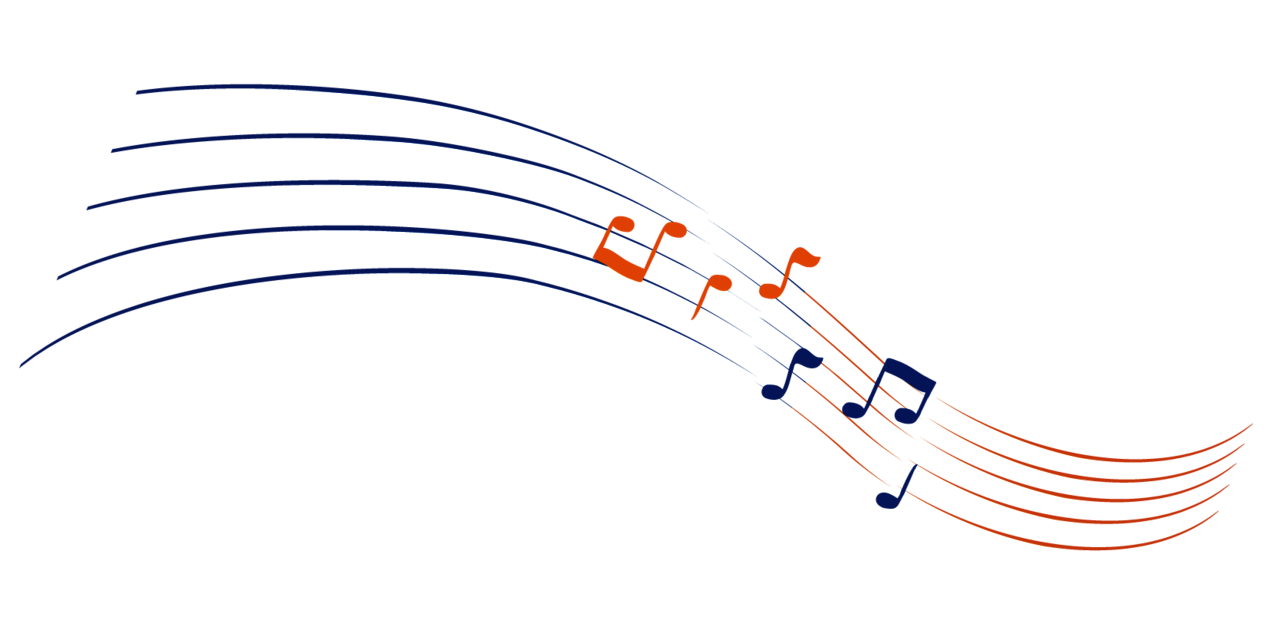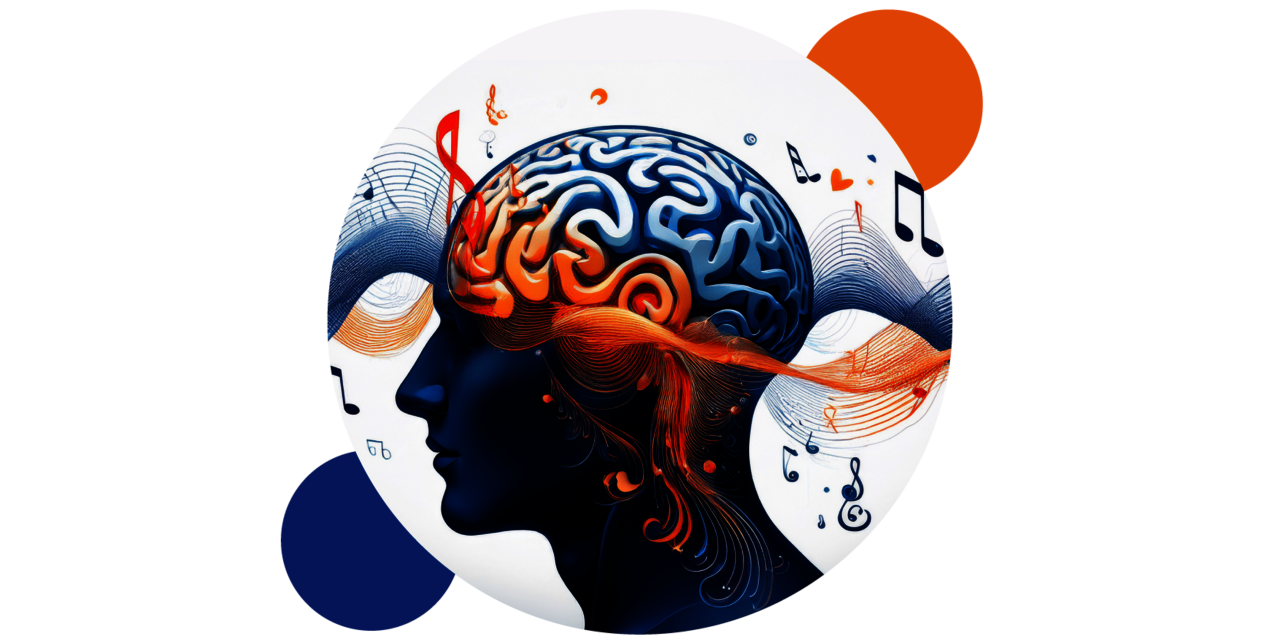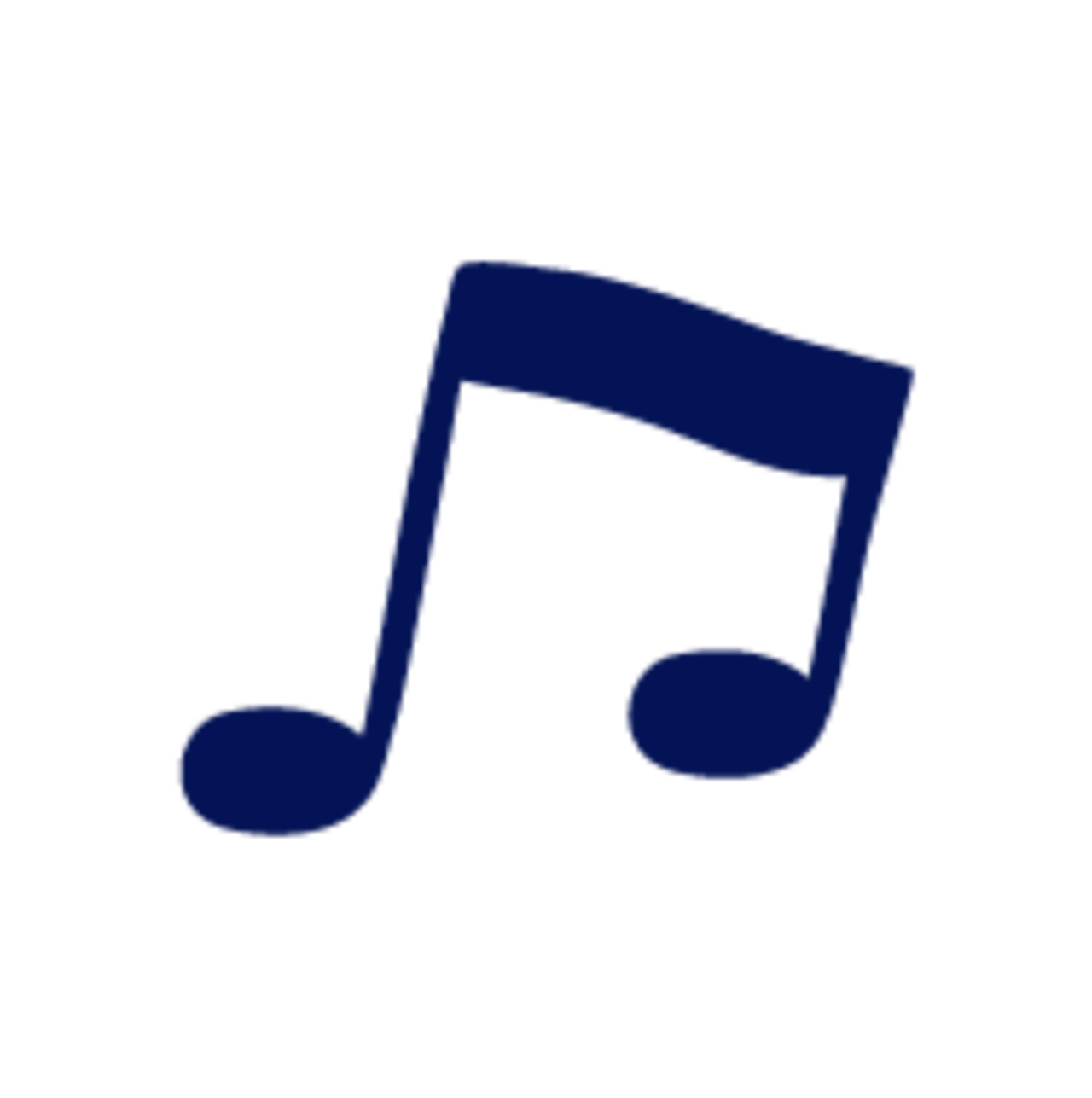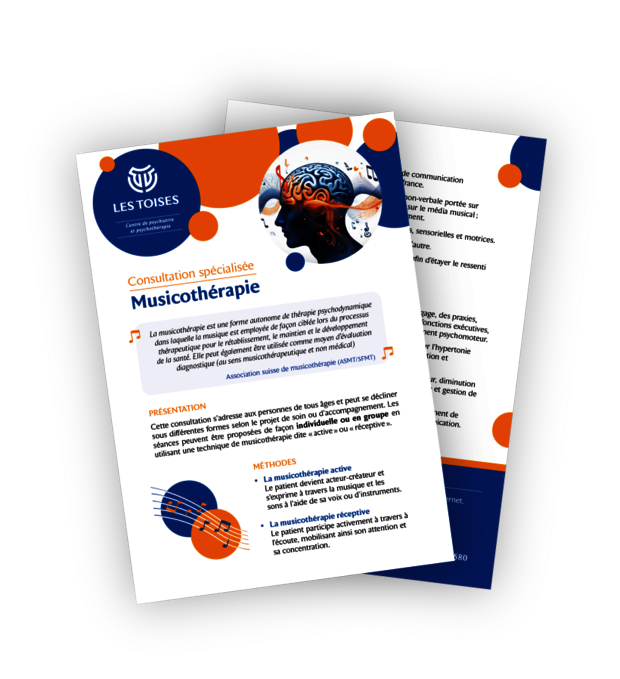
"Music therapy is an autonomous form of psychodynamic therapyin which music is specifically employed as part of the therapeutic processtherapeutic process to restore, maintain and develop health.of health. It can also be used as a means of diagnostic assessmentdiagnostic (in the musicotherapeutic, non-medical sense)."
Swiss Association for Music Therapy
(ASMT/SFMT)

Presentation
This consultation is aimed at people of all ages, and can take different forms depending on the care or support project. Sessions can be offered on an individual or group basis, using either an "active" or "receptive" music therapy technique.
Objectives
- To create, restore and maintain the means of communication and relationship for people in distress.
- Offer non-verbal communication therapy focusing on the sensory and emotional side, using the medium of music to enable people to express themselves in a different way.
- Restore and maintain cognitive, sensory and motor functions.
- Develop communication and relationships with others.
- Provide relational and emotional support to underpin the person's feelings.

Methods
Active music therapy
The patient becomes an actor-creator, expressing himself through music and sound, using his voice or instruments.
Receptive music therapy
The patient actively participates through listening, mobilizing his or her attention and concentration.

Domains

Cognition
Stimulation of language, praxis, gnosis, attention, executive functions, memory and psychomotor development.

Psychomotricity
Action on muscular hypertonia, mobilization, lateralization and cordination of limbs.

Psychology
Mood regulation, anxiety reduction, emotional expression and pain management.

Psychosocial
Supports and develops self-esteem, relationships and communication.
Practical info
Benefits are reimbursed by supplementary insurance.
